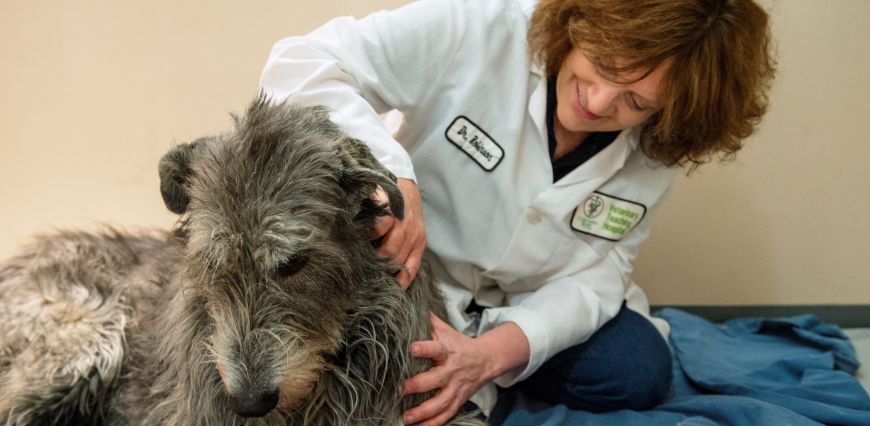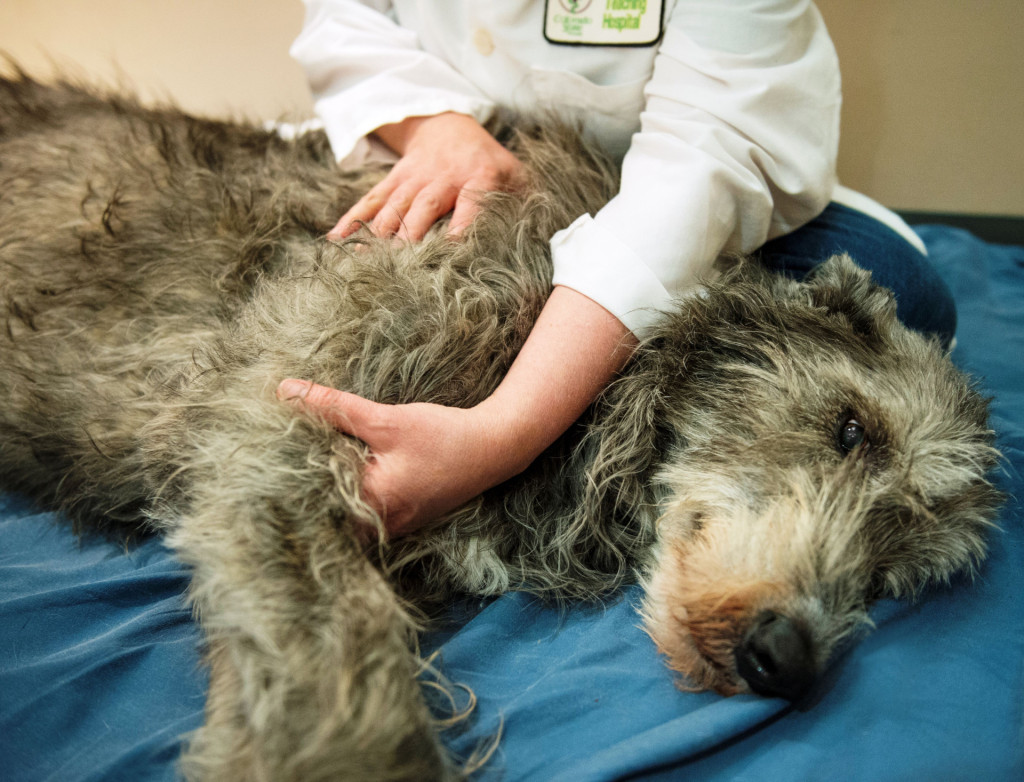
Have you ever had a massage? If so, how did you feel afterward – more relaxed, less stiff, more “at home” in your body? Do you typically turn to massage before or after an athletic event, in order to improve performance or recover from overexertion? Would you have welcomed massage after surgery to reduce pain and discomfort?
All of these are good reasons for you – and your dog – to receive massage. While many forms of massage exist, medical massage is a type of body work known as “outcome-based massage.” It is becoming increasingly available within human and veterinary medicine.
In contrast to a massage at the spa, a medical massage practitioner identifies specific problems and employs various techniques to address those concerns; a medical massage is performed with the intent of improving conditions or pathologies following a medical diagnosis.
This makes medical massage a perfect fit with veterinary clinics and hospitals because veterinarians, veterinary technicians, and massage therapists can find meaningful ways to introduce hands-on techniques for their patients.
Practitioners learn how to palpate, or examine, the muscles and fascia of an animal to determine where tension, pain, and restrictions in range of motion exist. This becomes extremely important in order to accurately and completely determine where and why an animal is hurting. This information can also aid in identifying non-invasive means of treatment and unnecessary surgery.
Here are three ways massage can help dogs:
Back pain and disk disease
Many dogs suffer from back pain, but this often goes under-recognized and, sadly, under-treated.
Palpation of the muscles near and around the spine can reveal areas of twitchiness, tenderness, heat and pain. Medical massage, alone or in conjunction with other supportive physical medicine measures, may alleviate tension and pain in the back, leading to improved mobility and comfort.
It is important to work with your veterinarian to determine whether massage would be appropriate for your dog and to find a well-trained practitioner. Conditions such as disk disease make a dog’s spine vulnerable to excessive force; although massage is relatively safe, too much pressure on an unstable spine could cause more problems.
It is also imperative for the practitioner to know how to interpret signs a dog is giving about whether the treatment is pleasurable or painful. Massage should be comfortable – not stressful!
Geriatric and hospice care
Calming, confident touch soothes the body and the mind, making medical massage an important adjunctive approach for many hospitalized patients, both human and non-human.

For older dogs and those nearing the end of life, medical massage affords a way to reduce medication requirements and counter social isolation. Research indicates that end-of-life patients who regularly receive massage become more peaceful and comfortable.
Massage can and should become routine in veterinary geriatric and hospice care because it:
- Alleviates constipation and encourages the elimination of metabolic end products from tissue
- Promotes circulation
- Relaxes muscle tension
- Settles the nervous system
- Relieves psychological strain
Regular, hands-on treatment provides many opportunities to detect early changes in an individual’s condition that warrant medical attention. For hospice care in particular, a medical massage practitioner visiting a home or working in a veterinary clinic may also identify environmental sources of stress for the patient such as noise (radio, television, pumps, alarms, loud voices or music), hygiene and skin-related concerns, patient bedding and mobility issues, and previously unrecognized areas of tenderness or dysfunction.
Hind limb lameness
Contrary to popular perception, not all pelvic limb lameness in dogs is joint-related, meaning a “bad hip” or a “blown cruciate.” Definitive diagnosis is crucial, especially prior to pursuing surgery. While advanced imaging and arthroscopy can provide insight into the cause of the lameness, neither method reveals muscle pain, which is a common source of tension and altered gait in dogs.
Only touch and informed palpation can quickly and accurately identify myofascial discomfort and strain patterns that may ultimately contribute to cruciate ligament dysfunction. While opinions vary widely on the cause and treatment of cruciate disease, most dogs with this issue also exhibit muscle tension, stiffness, and alterations in posture and weight bearing.
Sometimes, treating muscle tension and restriction alone can lead to marked improvement in weight bearing, depending on the actual source of the lameness. Whether or not the dog has surgery, massage and other integrative approaches such as acupuncture and laser therapy can play pivotal roles in recovery.
Are you curious about massage for dogs? Watch a video on the American Animal Hospital Association website to learn some simple techniques that you can employ regularly. Your dog will love you for it!
Dr. Narda G. Robinson is director of the Center for Comparative and Integrative Pain Medicine at Colorado State University’s James L. Voss Veterinary Teaching Hospital, where the first veterinary program in medical massage was introduced in 2009. She is co-author of “Canine Medical Massage,” (2015, American Animal Hospital Association Press).